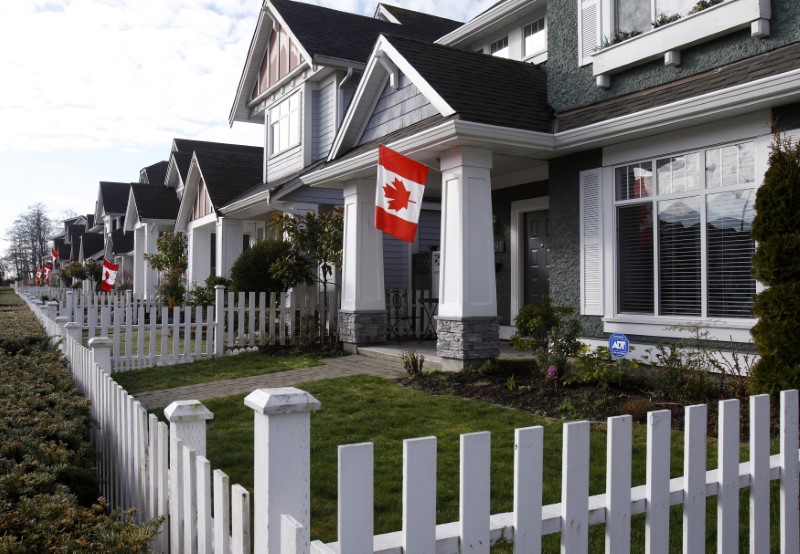By Ketki Saxena
Investing.com -- A new report from Ratehub.ca shows that despite a month-over-month decrease in Canadian home prices in July, soaring mortgage rates and a higher barrier for stress tests have led to a continued deterioration in Canadian housing affordability - even in markets where prices declined or stayed flat.
A recent report from the Canadian Real Estate Association showed that the average Canadian home price came in at $668,754, up 6.3% from the same time period last year but down 2% from June's figures.
However, despite the monthly decrease in home prices, the income needed to own a home has climbed in every major city across Canada for the month of July compared to June, driven by rising mortgage rates and higher stress test rates.
Vancouver buyers saw affordability deteriorate by the largest margin; a month-over-month increase in home values of $7,700, combined with the rising stress test means the average buyer saw their income requirements surge by nearly $9,000 over a one-month span.
Toronto’s average selling price dropped by $10,100, but the salary needed to buy climbed by reached $235,250, up $5,450 in a month.
The decline in affordability comes as variable mortgage rates surged from their pandemic-era lows of 0.85% to the 5.95% - 6.10% range today.
Fixed mortgage rates have also soared during that time period. On March 22 - before the Bank of Canada embarked on its rate hike spree - fixed-rate mortgages could be had for as low as 2.59%. The lowest five-year fixed-rate option today currently stands at 5.24%.
Since March 2022, the Bank of Canada has hiked interest rates 10 times - the most rapid tightening cycle in the Bank's history - taking the overnight rate from 0.25% in March 2022 to its current level of 5%.
“Most Canadians can now expect an average stress test of 8%t or higher, which is the highest stress test home buyers have ever seen,” James Laird, co-CEO of Ratehub.ca and president of CanWise mortgage lender, said in a news release Tuesday.
“Mortgage rates increased significantly from June to July, which has caused every city we looked at to become less affordable, even though home values were down in some cities.”
